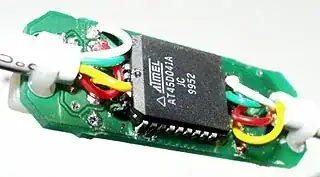Of course, the hardware/firmware also plays as role in keeping/compromising your security. The point is at the end of day, firmware also runs programs, and some controllers even provide full computing environments similar to small computers.
It is then no small wonder there are projects that revolve around avoiding proprietary formats, either in binary blobs or in proprietary operating systems and software.
Firmware replacement projects
Libre computers
Novena
Novena is a 1.2GHz, Freescale quad-core ARM architecture computer
closely coupled with a Xilinx FPGA. It’s designed for users who care
about Free Software and open source, and/or want to modify and extend
their hardware: all the documentation for the PCBs is open and free to
download, the entire OS is buildable from source, and it comes with a
variety of features that facilitate rapid prototyping.
The Librem 13 and 15
In this era of pervasive surveillance, rootkits bundled with corporate
software, threats of hardware backdoors by nation states, and the
overall increasing sophistication of attacks, I think Purism is on to
something here.
Minifree
Minifree sells GNU/Linux laptops, servers and related services that
respect the users' freedom and privacy. These laptops come with the
free (libre) and open source Libreboot BIOS replacement (based on
coreboot) preinstalled. The hardware is chosen specifically to run
with 100% Free Software in the operating system, with zero binary
blobs.
I will also leave here a link from Mr. Stallman: How I do my computing
As for installing backdoors:
NSA Hides Spying Backdoors into Hard Drive Firmware
American cyber-surveillance agency, the NSA, is taking advantage of
the centralization of hard-drive manufacturing to the US, by making WD
and Seagate embed its spying back-doors straight into the hard-drive
firmware, which lets the agency directly access raw data, agnostic of
partition method (low-level format), file-system (high-level format),
operating system, or even user access-level. Kaspersky says it found
PCs in 30 countries with one or more of the spying programs, with the
most infections seen in Iran, followed by Russia, Pakistan,
Afghanistan, China, Mali, Syria, Yemen and Algeria.
NSA intercepts routers, servers to slip in backdoors for overseas surveillance
The NSA routinely receives – or intercepts – routers, servers and
other computer network devices being exported from the US before they
are delivered to the international customers. The agency then implants
backdoor surveillance tools, repackages the devices with a factory
seal and sends them on. The NSA thus gains access to entire networks
and all their users.
NSA Built Back Door In All Windows Software by 1999
A careless mistake by Microsoft programmers has revealed that special
access codes prepared by the US National Security Agency have been
secretly built into Windows. The NSA access system is built into every
version of the Windows operating system now in use
It is due to this state of affairs, that:
It is also in the public domain FBI often enters suspects' homes to plant hardware bugs in their keyboards; and that ISPs have in their backbones servers to intercept and inject malware into executables and system updates, for them to be used by law enforcement agencies pretty much all over the world.
Secret Manuals show the spyware Sold to Despots and Cops Worldwide
The manuals describe Hacking Team’s software for government
technicians and analysts, showing how it can activate cameras,
exfiltrate emails, record Skype calls, log typing, and collect
passwords on targeted devices. They also catalog a range of
pre-bottled techniques for infecting those devices using wifi
networks, USB sticks, streaming video, and email attachments to
deliver viral installers. With a few clicks of a mouse, even a lightly
trained technician can build a software agent that can infect and
monitor a device, then upload captured data at unobtrusive times using
a stealthy network of proxy servers, all without leaving a trace.
Judge OKs FBI Keyboard Sniffing
U.S. District Judge Nicholas Politan said that it was perfectly
acceptable for FBI agents armed with a court order to sneak into
Scarfo's office, plant a keystroke sniffer in his PC and monitor its
output. Scarfo had been using Pretty Good Privacy (PGP) encryption
software to encode confidential business data -- and frustrate the
government's attempts to monitor him.
KeyGhost Security Keyboard

It will be also interesting to follow the nascent Single-Board computers market in 2016 and 2017, and what implications SBCs will bring for better or worse to the current security implications, namely in domestic users´ security.


